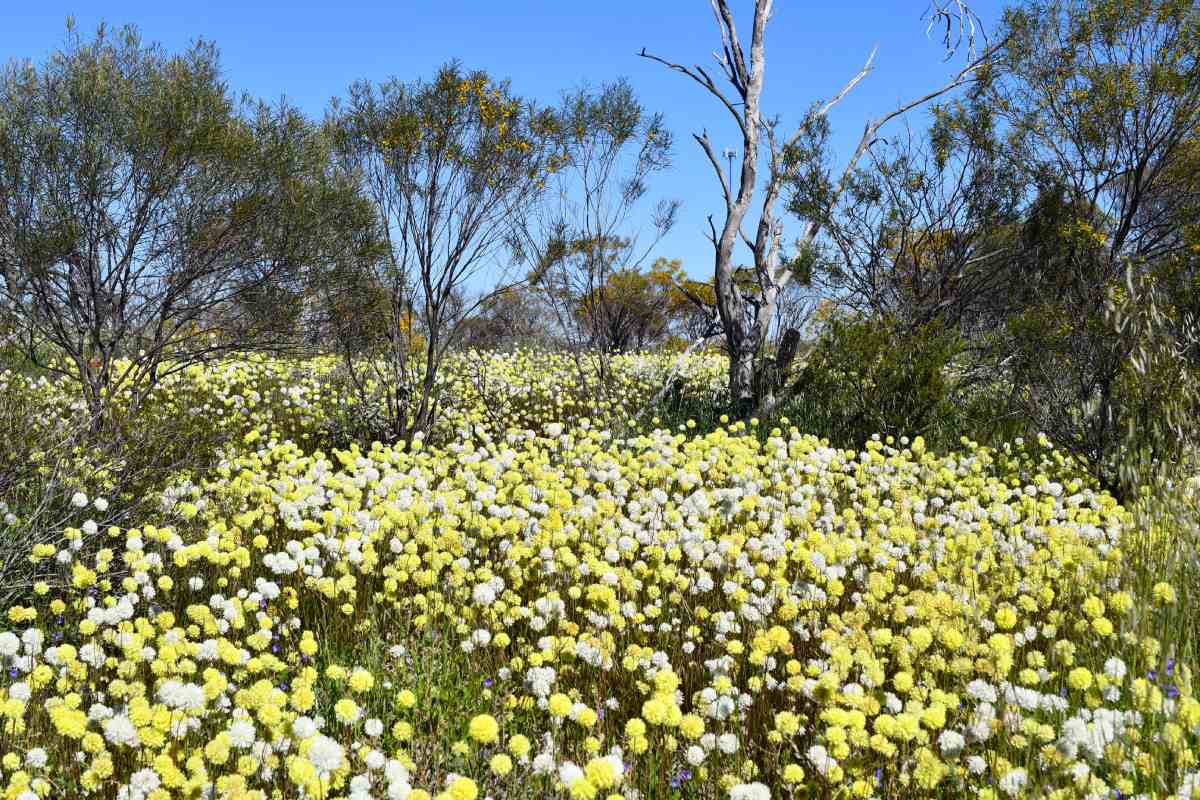Local’s Western Australia Wildflowers 2023 Guide: Best Places to See Them
For those of you eagerly awaiting the Western Australia wildflower season 2023, we have tips on when and where to see them. The western side of Australia is home to many different types of flowers that will take your breath away – it’s a sight not to be missed!
I’ve found a love for wildflowers in the past few years, so we’ve scoured the state to find some of the best ones.
Discover the best locations, tips for planning your trip, and immerse yourself in the breathtaking beauty of Western Australia’s wildflower extravaganza.
This post may contain affiliate links (of companies I book through). This means I may receive a small commission if you book through them. You can read the disclaimer for more information.
What Time of Year do Wildflowers in Western Australia Bloom?
The Wildflower Season usually starts in Western Australia’s northwest and in June and July. As the weather warms up and the winter rains recede, the landscapes across Western Australia come alive with a stunning array of wildflowers.
Flowers continue to bloom southwards from around August. However, it varies from year to year depending on the climate.

Western Australia Wildflower Season 2023 | Where to see them
Here we reveal the prime locations and discover wildflower hotspots where you can witness the mesmerising bloom of these botanical wonders. From the rugged outback to coastal plains and national parks, we’ll take you on a journey through Western Australia’s diverse landscapes, providing you with invaluable tips and insights to make the most of this awe-inspiring wildflower season.
Australia’s Coral Coast
Exmouth
The harsh conditions of Exmouth surprisingly produce a large variety of wildflowers with 630 plant species being recorded in the Ningaloo Coast World Heritage area. The wildflower season is generally from June to October but depends on the rainfall.
Cape Range National Park is the best place to look for wildflowers in Exmouth, especially Shothole Canyon, Charles Knife Canyon, Yardie Creek, and Mandu Mandu Gorge. You may see mulla mulla, various wattles, sturt’s desert pea, eremophila species and stackhousia.

The beautiful red sturt desert pea, which flowers in late winter, can be found on the side of the road and in the Milyering Discovery Centre car park.
North of Exmouth town, you may see silver bush along Murat Road and Hakea south of the town.

Coral Bay
Like Exmouth, the wildflowers in Coral Bay usually start blooming in the middle of winter (July). You may see orchids and flannel bush.

Kalbarri
Around the Kalbarri National Park coastal cliffs, you will see Murchison rose out in bloom (in-between Natural Bridge and Island Rock).

You can see the pink poker wildflower on the Kalbarri National Park loop walk that leaves from Natures Window (on the cliff top before you descend into the gorge). Also, Woody Pear, Acorn Banksia, and Purple Thryptomenes are coming out.
White Grevillea can be found near the Z Bend along with orchids and claw flower.
If you’re up to hiking along the Four Ways Trail, you may spot Orchids, yellow guinea flowers, and Murchison Bell.

Moora
Candy Bush Reserve is located on the Midlands Road entrance to Moora and features walk trails with wildflowers, including the blue fan flower, everlastings, and blue leschenaultia. The reserve is an eight hectare salmon gum and wandoo remnant and you may be able to find the Moora spider orchid, brown-veined shell orchid, and green-veined shell orchid.

Dalwallinu
The Dalwallinu Discovery Centre is excellent with lots of maps, brochures, and up to date information on where to find wildflowers.
Go to Moon Reserve, Petrudor Rocks & Xantippe Tank to see Blue Fairy, Spider, and Leek Orchids. Sun, Ant, Donkey, and Cowslips.

Coorow
Coorow Farm is one of the best places in Coorow to see wildflowers. It’s located 1 km from town on Coorow Latham Road. The trail can be driven or park up as you enter the farm and take a walk through the gates. We saw plenty of everlastings, pompoms, poppies, and other native flowers.
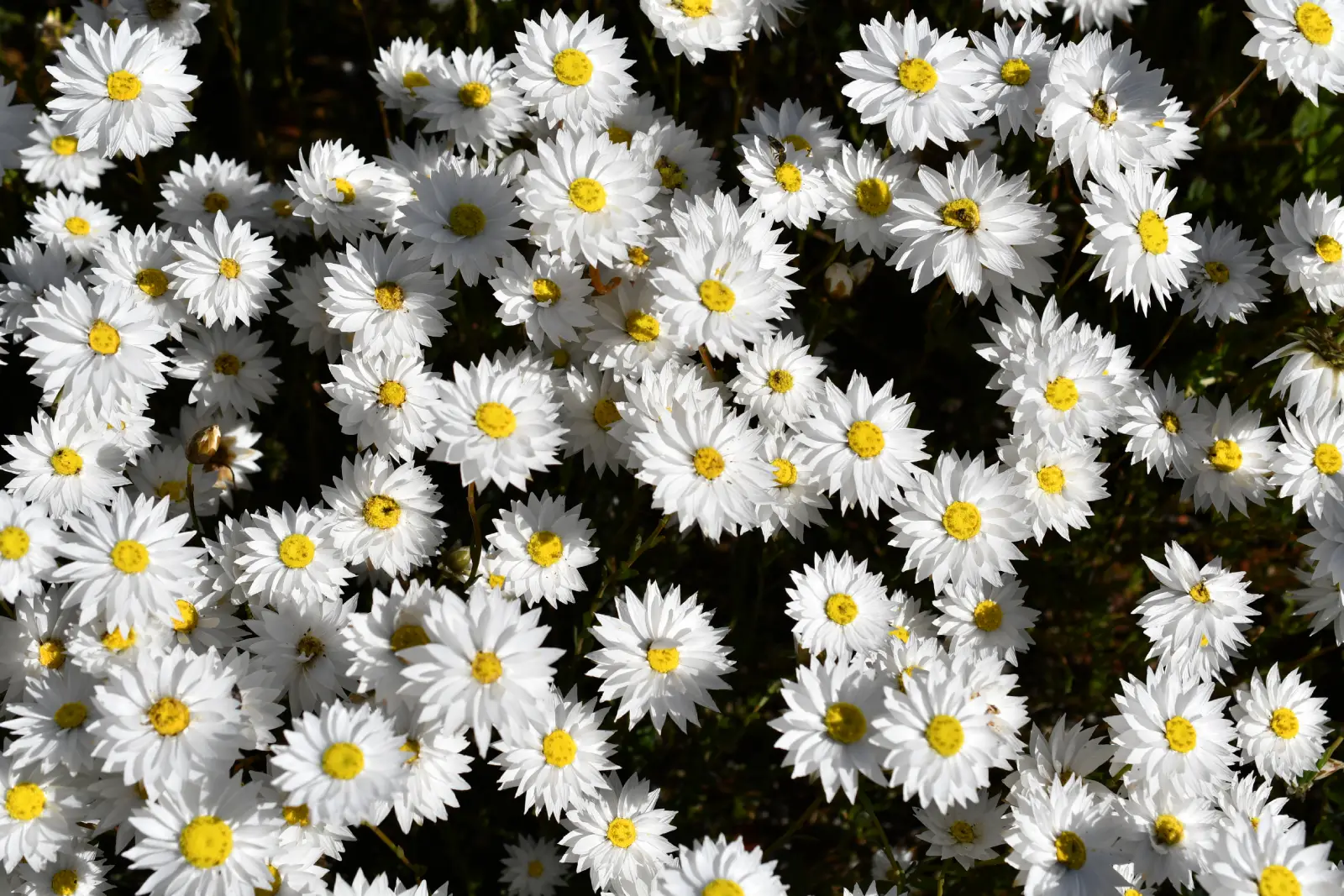
Three Springs
As winter starts to end, the rolling hills around Three Springs Western Australia are a beautiful sight. The rolling hillsides, vast paddocks and yellow wildflowers make for perfect photo opportunities for tourists looking to explore this part of Western Australia.
This small town in the Goldfields region is renowned for its picturesque townscape and old-style wheat silos and offers plenty to do.
The Yarra Yarra Lakes, 16 km south of Three Springs, are home to a variety of birds, including swans, pelicans, ducks and the siberian stilt.
10 km east of Three Springs lies Western Australia’s first talc mine and offers stunning views from the lookout there. The talc mine is the second largest in the world and the largest in the southern hemisphere with an annual production exceeding 100,000 tonnes.
Near the Information Bay in town, you will find an Armoured Personnel Carrier used in Vietnam War, which was operated by a local RSL Member. This is where the Heritage Trail starts.

There are several types of wildflowers throughout the town, including native orchids, grevillia, hakea, yellow lechenaultia, wattle, and purple stars.
We saw lots of cowslip orchids and blue fairy orchids in Dookanooka Reserve, off Eneabba-Three Springs Road.
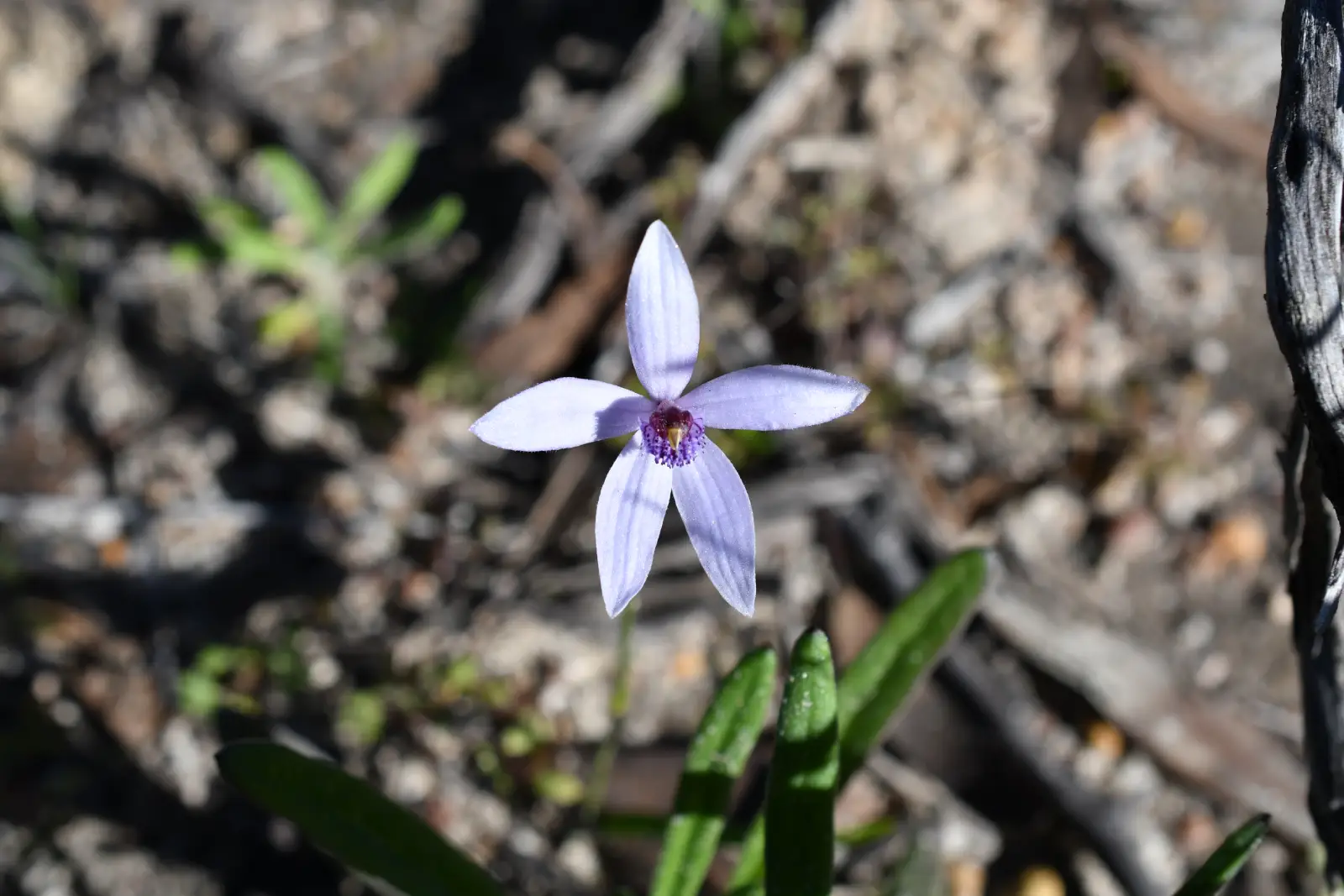
Morawa
There are mainly everlastings in Morawa, but we also saw dampiera and pom poms. Along Three Springs Road, near Mt Campbell, you will see the Pink Salt Lakes and white everlastings.
Check with the Information Centre for directions to the Wreath Flowers.
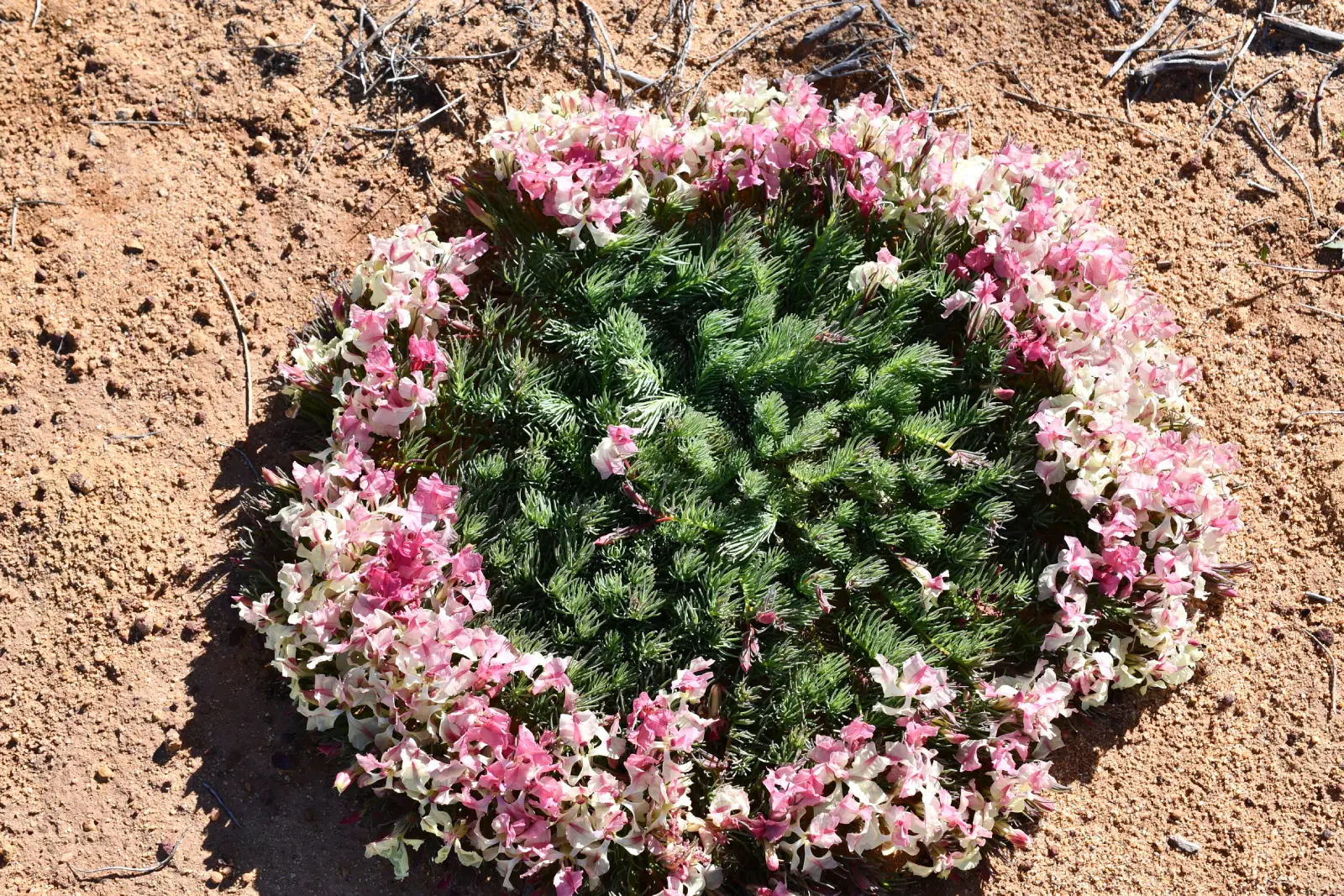
Mingenew
Mingenew lies in the heart of wildflower country and is close to Coalseam National Park, one of the best places to see carpets of everlastings.
Mingenew Hill has beautiful views over the town and canola fields, which look like a patchwork quilt of yellows and greens. The hill has a variety of Western Australia wildflowers and is a great spot to see the yellow pom pom everlastings. You may find purple fringe lilies and blue fairy orchids walking up the road from Drovers Rest to car park on the hill.
Mingenew Hill is an excellent place to watch the sunset with a glass of wine.
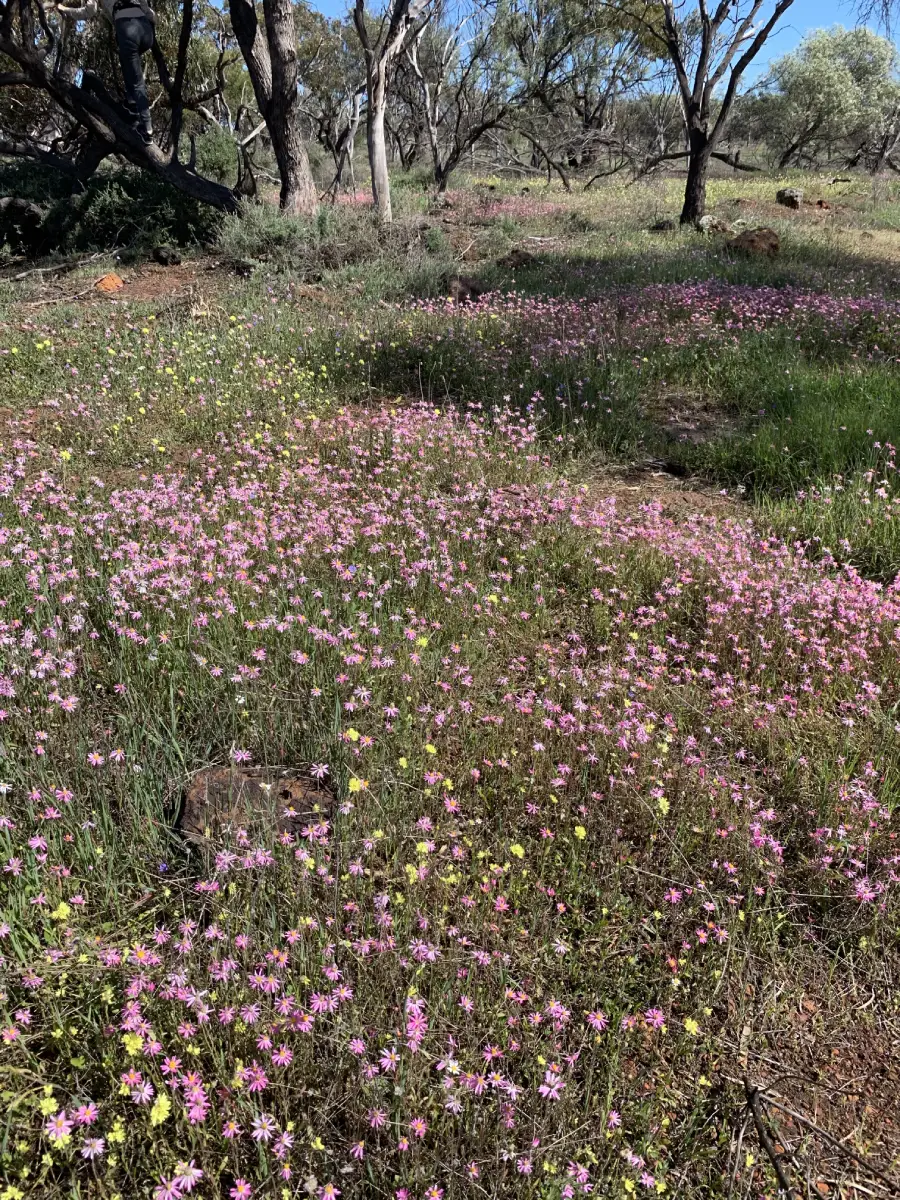
Depot Hill,12 km from Mingenew, you can find a variety of donkey orchids, snail orchids, spider orchids, everlastings, and thryptomene. It was used as an army firing range during World War II and you can walk up a track to the remnants of an old training trench.
We saw lots of cowslip orchids there and spider orchids. Look for arrows in the sand which some kind person has marked pointing to where the orchids can be found (2021).
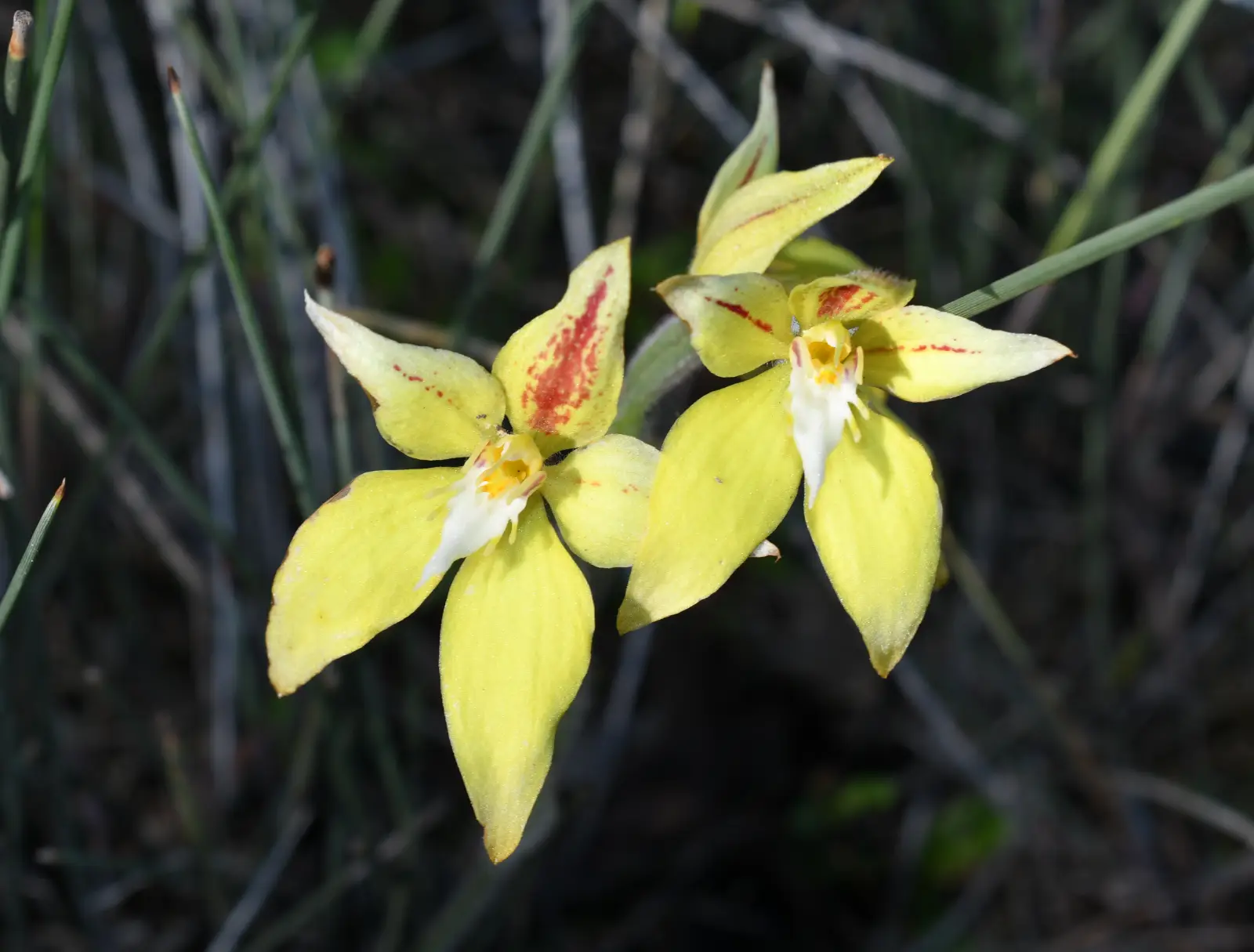
Coalseam Conservation Park
Coalseam Conservation Park, sometimes called Coalseam National Park, has a variety of amazing wildflowers that will captivate you with their beauty. You can enjoy nature walks along bush tracks to see this confection of amazing wildflowers and, wild landscapes and wild animals.
The park features spectacular wildflower displays following winter rains between July-September when there are carpets of pink, yellow, and white everlastings.

The park is the site of the first mined coal deposit in WA and you can see exposed bands of coal seams, along with the siltstones, claystones, and sandstones that stripe the cliff faces. The best place to see these geological formations is from the Irwin Lookout and at the River Picnic Area.
To really see Coalseam Conservation Park in all its beauty, hike the 3.2 km Plateau Loop Trail, which takes you through rare eucalypt woodland to a plateau ridge to enjoy sweeping valley views. The trail leaves from miners campground.

Mullewa
Mullewa is a quaint small town in the heart of wildflower country. It is famous for its abundance of wildflowers, including the rare wreath flowers at nearby Pindar. Make sure to pop in to see the friendly people at the Mullewa Visitor Centre where they will provide you with free maps and information on how to get to the wreath flowers and other walks around the town.
The moderate Wildflower Trail begins on the opposite side of the road to the Mullewa Caravan Park. The trail explores the various species of wildflowers in the region and volunteers have tied biodegradable yellow ribbons to the trees to show where the rare orchids can be found.
Outdoor Bloom, Mullewa’s wildflower festival is on from the 24th to 27th August 2023, celebrating the unique biodiversity of the Mullewa area.
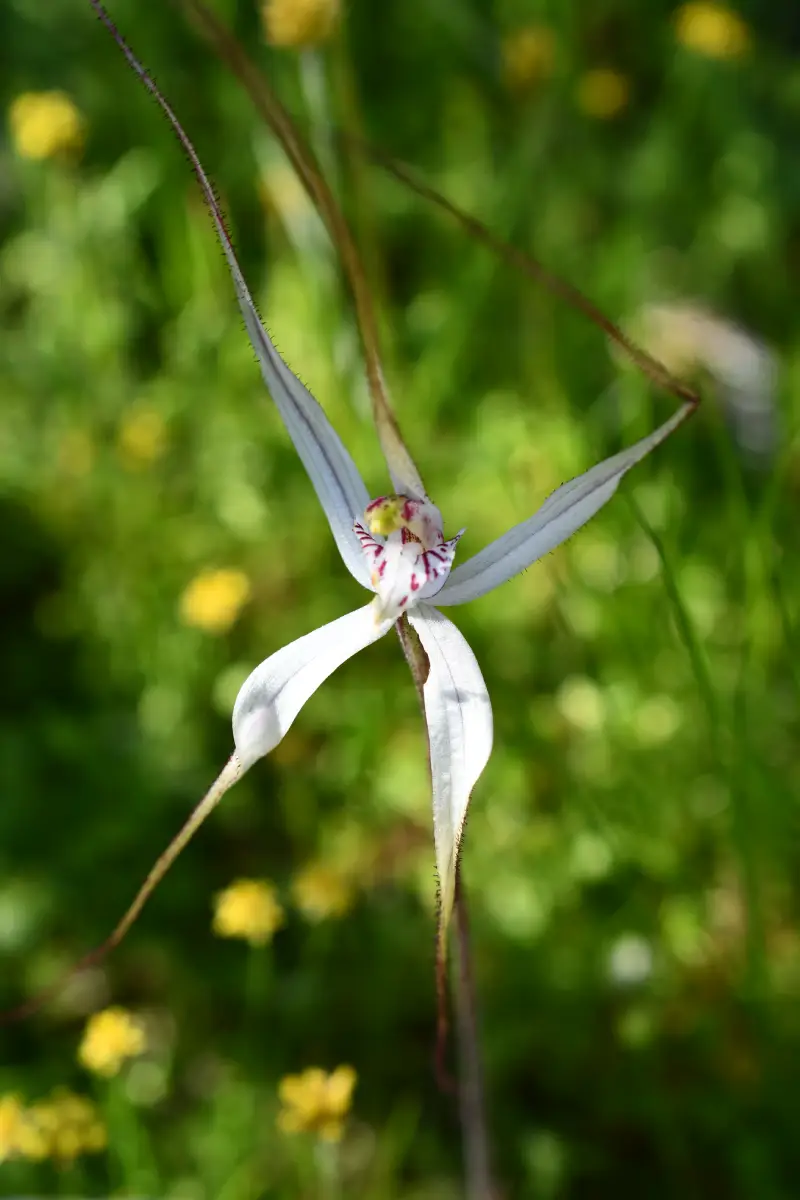
The wreath flowers can be found 29 km outside of Mullewa on the Pindar-Berringarra Road. You will see a sign for them, where you need to turn off on the left. Follow the road for about 10 km and you will see some on the left of the gravel road. This is meant to be the only place to park but there were a few cars parked on the other side of the diversion. A walk trail leads through to the other side where you will see even more wreath flowers.
Make sure to drive the whole loop to see all the stunning wreath flowers.

Jurien Bay
Lesueur National Park is a protected area about 20 kilometres east of Jurien Bay. It is renowned for its remarkable biodiversity and stunning wildflower displays. The park covers an area of about 27,000 hectares and is named after the natural history artist Charles Alexandre Lesueur.
Wildflowers are the main attraction in Lesueur National Park, and it boasts an incredible diversity of plant species. Over 900 species of native plants can be found within the park, including many rare and endangered species. The park’s wildflower displays are particularly impressive during the spring months (August to November) when the landscape comes alive with a vibrant array of colours.
Exploring Lesueur National Park allows visitors to enjoy not only the wildflowers but also the scenic landscapes and unique biodiversity. There are several walking trails throughout the park, ranging from short walks to longer hikes, providing opportunities to immerse yourself in the natural beauty.

Southwest & Great Southern
Stirling Range National Park
With its towering peaks, dramatic landscapes, and diverse ecosystems, this natural parkland becomes even more enchanting during the wildflower season. From delicate orchids to vibrant banksias, Stirling Range National Park boasts a rich tapestry of native flora that will leave you in awe.
The wildflower season here typically begins in late winter, around August, and extends into early spring, up until November. This period showcases an explosion of colours as the landscape transforms into a vibrant and spectacular display of blooming wildflowers. The timing of the WA wildflowers may vary slightly each year, depending on weather conditions and rainfall, so it’s recommended to check for updates before planning your visit.
Stirling Range National Park is renowned for its remarkable diversity of flowering plants. Some of the must-see species in this national park are banksias, orchids (including the spectacular Queen of Sheba Orchid), and everlastings.
To fully immerse yourself in the spectacular wildflowers, exploring its scenic trails is a must. Some of the top ones that offer great walk trails and fantastic wildflower viewing opportunities are Bluff Knoll Summit Trail, Mount Trio Summit Walk, and Nancy Peak Trail.
Porongurup Range
Nestled in the scenic southwestern corner of Western Australia, the Porongurup Range stands tall, showcasing not only its ancient granite peaks but also a spectacular display of wildflowers. This stunning region offers nature enthusiasts and hikers a breathtaking experience, where you can immerse yourselves in the beauty of its wildflowers.
The Porongurup Range is a granite formation that stretches for approximately 12 kilometres, located east of the town of Mount Barker. Its ancient peaks, some dating back more than 1.1 billion years, create a stunning backdrop for exploring the diverse flora of the region
Spring, from September to November, is the ideal time to witness the wildflower extravaganza in the Porongurup Range. One of the highlights of the Porongurup Ranges wildflower display is its diverse collection of orchids. More than 75 orchid species can be found here, from the striking Queen of Sheba orchid to the exquisite purple enamel orchids.
Exploring the Porongurup Range also offers hiking opportunities with trails such as Castle Rock Skywalk and Nancy’s Peak providing panoramic views of the surrounding countryside.
Margaret River Region
Beyond the vineyards and pristine beaches, the Margaret River wildflowers captivate visitors. From vibrant blooms to delicate orchids, this corner of Western Australia bursts into a riot of colours.
The wildflower season in the Margaret River region typically begins around August, and continues into early summer.
The Margaret River region boasts an impressive array of wildflower species. Some of the standout ones are hovea, wisteria, and orchids.
Some of the best places for Western Australian wildflowers in this region is Boranup Forest, Leeuwin-Naturaliste National Park, and Meelup Regional Park.
Perth
Kings Park
Known for its breathtaking views of Perth, abundant green spaces, and diverse flora, Kings Park becomes a paradise for wildflower enthusiasts during the spring season.
Situated just a stone’s throw away from Perth’s CBD, Kings Park offers a sanctuary of native bushland and a thriving ecosystem. Within this urban park, wildflowers take centre stage, transforming the landscape into a vibrant carpet of colours.
Springtime, from September to November, is when Kings Park truly comes alive. As the weather warms and the days grow longer, wildflowers begin to bloom.Orchid lovers are in for a treat with over 400 orchid species found in Western Australia, Kings Park showcases many of these exquisite beauties. From the delicate Pink Fairy Orchids to the vibrant Donkey Orchids and the elusive Spider Orchids, the park provides a treasure trove for orchid enthusiasts and photographers.
Kings Park is also home to the iconic Everlastings or Paper Daisies. These native wildflowers blanket the park in colour, their papery petals swaying in the breeze.
The park also has an assortment of Kangaroo Paws. These intriguing plants, with their tubular flowers and velvety texture, are native to Western Australia and add a touch of exotic charm to the wildflower displays.

Seeing the Wildflowers of Western Australia Tips
- Take nothing but photos so you don’t end up with a $2000 fine (it is illegal to pick wildflowers).
- Do not trespass on Private Property.
- Please don’t tramp through the canola fields. These are the farmers’ income and you can spread disease.
- Visit the Information Centres; they are the best source of information and can direct you to the wildflowers.
- Try and spend a few days here. Don’t underestimate the distances.
- Shops shut early in country towns so either take provisions with you or stock up early.
- Look at the Wildflower Tracker to give an idea on what’s blooming where.
West Australian Wildflower Accommodation
Have you booked accommodation?
We use Booking.com for most accommodation bookings as they offer free cancellation on many properties and have a price match guarantee. We book through Stayz (part of VRBO) for private accommodation as we find it is often cheaper than Airbnb.
Tip: Accommodation gets booked quickly, especially during the WA school holidays. To avoid disappointment, book early.

Western Australia Travel Guide

For other ideas on where to visit in Western Australia along with the best things to do, where to stay, how to get around, and other essential information, click on the link below.
Save Money Planning Your Trip
Click on the links, which will take you directly to the website.
Flights ✈️
We fly Virgin Australia domestically due to their competitive prices and fantastic customer service, and fly with Qatar Airways to Europe.
Accommodation 🏩
We mainly use Booking.com for accommodation as they consistently have the lowest rates with free cancellation on most properties.
For pet sitting in Western Australia and worldwide, we are members of Trusted Housesitters. Free accommodation for pet and house sitting.
Car Rental 🚘
To compare rental car company prices, we use Discover Cars, an award-winning car rental comparison website. They offer competitive pricing in over 10,000 locations worldwide and are highly rated.
Campervan/RV Rental 🚐
DriveNow is a good resource to compare campervan hire in Western Australia as it includes all the large companies like Britz, Maui, and Jucy as well as smaller ones.
Travel Insurance 🌏
Cover-More and Travel Insurance Direct are our preferred travel insurance companies for domestic and international travel.
See this Travel Insurance for Australia guide for more information.
I hope you’ve found the Western Australia Wildflowers guide useful. Please consider using our links to book accommodation. Thank you.

